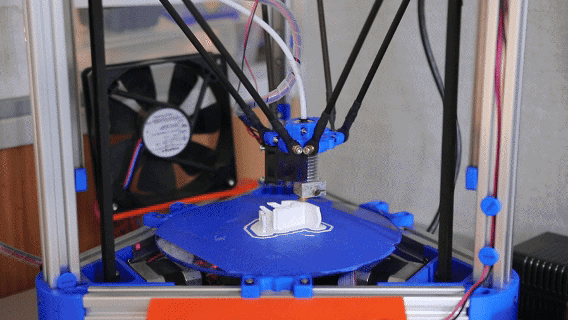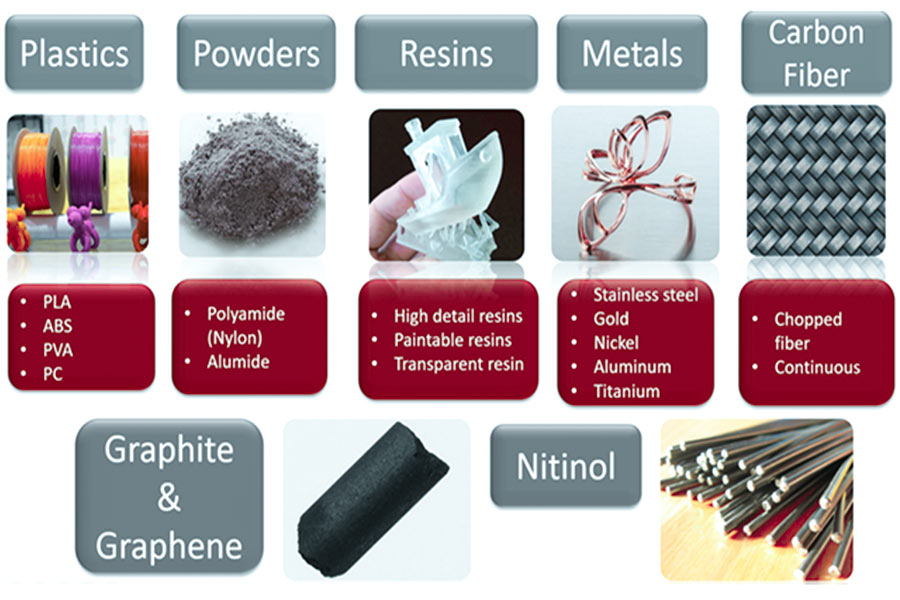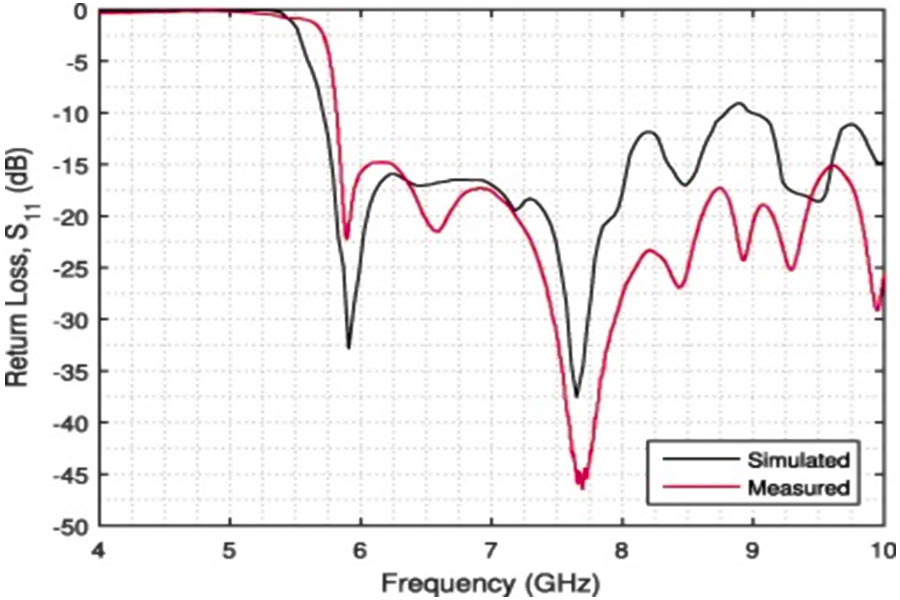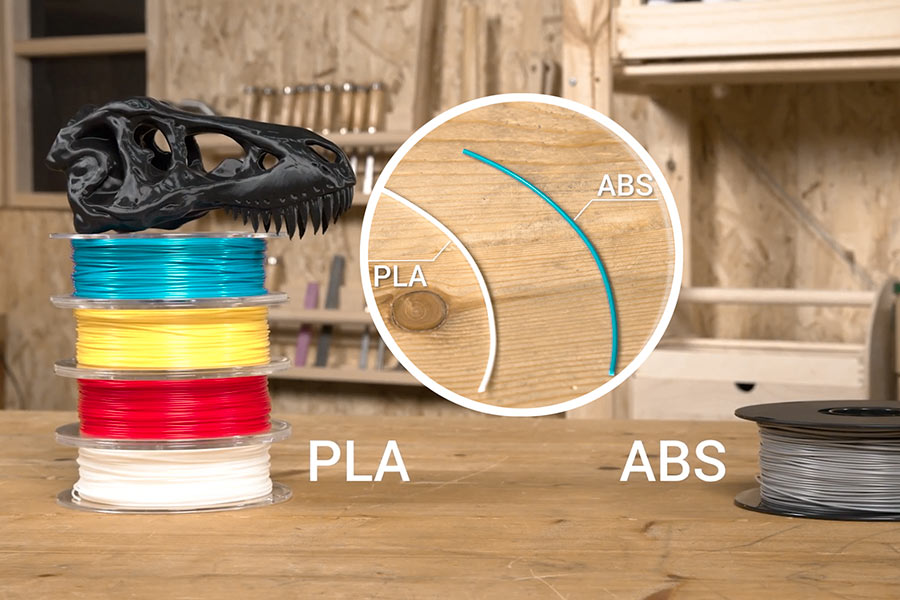With the rapid development of 3D printing technology, material innovation has become a key driver of its wide application. From lightweight plastics to high-strength metals, a variety of 3D-printing materials offer endless possibilities for complex structural design and functional realization. Whether used for rapid iterative validation of 3D printing models or for direct manufacturing of end products, the selection of materials directly affects the performance, cost, and feasibility of the finished product.
Current mainstream materials include thermoplastic materials (e.g. PLA, ABS), metallic materials (e.g. titanium alloys, aluminum alloys), composites, etc., serving prototype development, industrial manufacturing and aerospace. In the future, the development of new materials will continue to push performance boundaries, helping 3dprinting unlock potential in more settings, from healthcare to architecture.

What are the types of 3D printing materials?
3D printing offers a variety of applications across a variety of materials and is divided into the following categories, each with its own unique performance and application scenario:
| Type of Material | Typical material | Features | Application scenarios |
| Plastics | PLA, ABS, PETG, Nylon. | Low cost, easy to process, suitable for rapid prototyping and lightweight requirements. | Education, consumer electronics, toys, groceries. |
| Metallic | Titanium alloy, aluminum alloy, stainless steel, cobalt chromium alloy. | High strength, high temperature resistance, suitable for industrial and high-end manufacturing. | Aerospace, automotive, medical implants. |
| Composites | Carbon fiber reinforced nylon, glass fiber ABS. | Combining the advantages of a variety of materials (such as strength and lightweight), performance breaks through the limitations of a single material. | High-end industrial components, drones, automotive lightweighting. |
| Ceramic materials | Aluminum oxide, zirconium oxide, silicon carbide. | High temperature resistance, corrosion resistance, high hardness, suitable for precision manufacturing. | device packaging, tools, spacecraft insulation. |
| Biomass | Hydroxyapatite and bioactive glass. | High biocompatibility good for medical prosthetics and regenerative medicine. | |
| Photosensitive resin | Standard resin, transparent resin, flexible resin. | Liquid resin cured by UV light, smooth and fine surface, suitable for fine structure. | Dental models and microfluidic devices. |
| Elastic material | TPU (thermoplastic polyurethane), silicone. | Flexibility and tear resistance, suitable for dynamic components. | Flexible components such as seals and shoe soles. |
| New material | Conductive PLA, woody composites, graphene. | Cross-border integration, expanding 3D printing boundaries. | Electronic circuits, biomimetic structures, art installations. |
Covering more than 50 materials, JS caters to the precision needs of industries such as healthcare, aerospace and more, providing a one-stop solution for complex components. Applications of recycled plastics and biobased materials can reduce carbon footprint by 20%, balancing environmental protection and efficiency.

How to distinguish between ABS and PLA materials?
ABS (Acrylonitrile Butadiene Styrene) and PLA (Polylactic Acid) are the two most widely used materials in 3D printing service, and their differences in characteristics directly affect the printing effect and finished product performance.
1.Core differences
- Material source: PLA is a biodegradable biobased material (maize/sugarcane), while ABS is a biodegradable petroleum-based material.
- Printing temperature: PLA printing temperature is low and no heating bed is required, ABS requires high temperature and heating bed to prevent warping.
- Finished product performance: ABS high temperature, shock resistance, suitable for functional components, PLA hardness, high brittleness, suitable for static model.
- Environmental safety: PLA is odourless and suitable for household use. ABS emits slightly irritating gases and requires ventilation.
2.Comparison of core features
| Comparing dimensions | ABS | PLA |
| Sources of material | Petroleum-based synthetic material, non-degradable. | Plant-based biodegradable materials such as cornstarch. |
| Printing temperature | Nozzle: 220-250 °C, requires a heated bed (80-110 °C). | Nozzle: 180-220 °C without heating the bed. |
| Heat resistance | Heat resistance (up to 100 degrees Celsius for long-term use). | Low temperature resistance (easy to soften and deform, above 60 °C). |
| Mechanical properties | Resilience, impact resistance, suitable for load-bearing structure. | High hardness and brittleness, suitable for lightweight models. |
| Printed scents | Heat to release a pungent odor. | Almost odorless, suitable for indoor environments. |
| Post processing | Polishing plating, high surface smoothness. | Needed to polish or spray paint, later treatment is more difficult. |
| Environmentally friendly | Non-degradable and may pollute the environment after treatment. | Completely biodegradable, in line with the trend of green manufacturing. |
Is the cost of plastic 3D printing materials high?
The price of plastic 3D printing materials is influenced by various factors, including material type, printing process, model complexity, etc. Here's JS company's multi-dimensional analysis of its cost composition and advice on how to optimize it:
1.Differences in material type
- Low-cost material: Polylactic acid unit price is around $20-50/kg, suitable for prototype validation or decoration models.
- Middle-end material: ABS and PETG unit price in the $50 -100/kg, strength balance, temperature resistance, suitable for industrial components.
- High-performance materials: Nylon (PA), TPU (elastomer) unit price of $100-300/kg, suitable for high load or flexible parts.
2.Printing technology Surcharge
- FDM technology: Low cost, but complex models may increase material consumption due to support structure (approximately 10%-20%).
- SLS Technology: Powder powder materials rate is high (about 95%), but equipment maintenance costs drive up service unit prices (about 30% -50%).
3.Material loss and recovery
- SLS nylon powder can be reused 5 to 8 times, and long-term use can reduce material costs by about 20%.
- FDM support structure typically have a material loss rate of 10%-30% and need to be factored into total costs.
JS Cost Optimization Strategy
1.Material diversity optimization costs
JS support includes PLA, ABS,Various engineering plastics including nylon, TPU, etc. Customers can flexibly choose the most cost-effective material solution according to their needs. For example, low-cost PLA is an option for prototype production, while high-strength nylon is recommended for functional components to avoid overinvestment.
2.Digitize processes to reduce losses
By supporting industrial file formats such as STEP/IGES, CAD data can be directly integrated to achieve mold-free production and reduce traditional mold opening costs. A 3D printing project for car components has saved up to 30% on materials thanks to digitisation.
3.Lightweight model design
JS can reduce the cost of materials by 30%-50% through topology optimization, such as hollow structures or honeycomb designs. At the same time, place the model in a reasonable direction, reducing the support area (e.g. vertical print pendants).
4.Precise process control of waste
JS achieves ±0.005mm accuracy, greatly reducing trial and error costs. Feedback from a medical device customer shows that through JS's 3D printing verification stage, the material scrap rate has dropped from 12% of traditional CNC to 3%, significantly saving material costs during the R&D phase.
Which material should be selected for rapid prototyping?
The core goal of rapid prototyping is to effectively verify the feasibility of the design, therefore the material needs to balance molding efficiency, performance and cost control. Here are the selection strategies based on different needs:
1.Common Material: PLA
Strengths:
- It has become one of the preferred materials for 3D model printing because of its convenience and environmental protection.
- Eco-friendly, biodegradable, low printing temperature (180-220 °C), no need for heating bed, suitable for home or office environments.
- Fast molding speed, smooth surface, suitable for rapid production of educational equipment or consumer grade shells.
Limitations: Low temperature resistance (prone to deformation at <60 °C) and low impact resistance.
2.High strength material: ABS
Strengths:
- High temperature resistance (up to 100 °C), high impact resistance, suitable for manufacturing functional components that require mechanical stress.
- The supporting structure is easy to remove and the post-processing cost is low.
Weaknesses: Printing has a pungent odor, requires ventilation, high shrinkage rate and parameter optimization.
3.Balanced material: PETG
Strengths:
- The the printability of PLA combined with the strength of ABS increased the temperature resistance to 70 °C, with no pungent odor.
- Adjustable transparency is ideal for quick verification of transparent or translucent appearance.
Weaknesses: Printing is slightly slower than PLA and requires precise humidity control to prevent moisture absorption and distortion.
4.Flexible material: TPU
Strengths:
- In flexible demand scenarios, the highly elasticity structures can be achieved by 3D models printing.
- Support printing on complex surfaces to reduce the need for support structures.
Weaknesses: Slow printing speed, need to optimize interlayer adhesion.
5.Speciality materials: nylon (PA) and resin
Nylon (PA):
- High strength, wear resistance, corrosion resistance, suitable for gear, bearings and other mechanical parts prototype.
- Mainly used in SLS technology, the powder can be recycled to reduce costs.
Photosensitive resin:
- The surface is smooth and fine with accuracy ± 0.05mm, suitable for small structures or jewelry models.
- UV curing is required for high-precision medical or consumer electronics prototypes.
Can ink jet printing be used in industrial manufacturing?
1.Advantages ink jet printing technology in Industrial Manufacturing
- Fast and efficient: A single spray can cover a large area, with multi-nozzle system, can achieve small size rapid molding, suitable for mass production of placards, labels or decoration.
- Material diversity: Compatible with special media such as ink, conductive paste, ceramic/metal powder, direct printing of functional coatings or complex structures.
- Model not needed: Through digital design direct output, reduce the traditional manufacturing costs of mold opening, especially suitable for small batch customized models printing needs.
2.Typical Industrial application scenarios
- Rapid prototyping: Industrial grade inkjet printers can be combined with photosensitive resins or composites to quickly export high-precision 3D model printing components for product validation or assembly testing.
- Surface decoration and labelling: Direct printing of designs, serial numbers or brand logos on metal, plastic or glass surfaces, replacing traditional screen printing processes, with efficiency gains of over 50%.
- Functional material deposition: The medical field uses ink jet printing of bioactive materials to manufacture artificial bone scaffolds. The electronic industry prints conductive lines to achieve the integration of micro-sensor molding.
3.Synergistic effects with 3D printing services
Professional 3D printing services combine inkjet technology with traditional additive manufacturing (e.g. SLA, SLS) to offer hybrid solutions:
- Multi-material composite printing: The inkjet unit is connected with the laser sintering equipment, and the synchronous manufacturing of metal substrates and polymer coatings improves the durability of parts.
- Small-batch bespoke production: For personalized tools and customized consumer goods,such as shoe tread patterns and cosmetic packaging, inkjet printing allows for flexible design adjustments that reduce delivery times to less than 72 hours.
- Cost optimization: By uploading a model of a printed document through a cloud platforms, service provider automatically match the best parameters to reduce material waste and manual intervention.
What are the effects of extreme temperature differences in space on the stability of PEEK structures?
PEEK is a high-performance thermoplastic polymer commonly used in extreme environments such as aerospace. However, the extreme temperature differences faced by space missions (-150 °C to +120 °C) can seriously affect their structural stability, as demonstrated and countered by:
Effect of Extreme Temperature Difference on the Stability of PEEK structure
1.Thermal expansion and contraction stress
The thermal expansion coefficient of PEEK (about 60×10⁻⁶/ °C) tends to cause internal stress concentration when temperature fluctuates wildly, leading to deformation, cracking and even failure of the member. For example, satellite braces may develop fatigue cracks due to repeated expansion and contraction during the alternation of day and night.
2.Material performance degradation
- High temperature end: The PEEK molecular chains can be rearranged when continuously exposed to temperatures above +120 °C, resulting in a decrease in performance (Tg ≈143 °C) near the glass transition temperature and a decrease in hardness and strength after prolonged use.
- Low temperature end: At temperatures below -150 °C, PEEK's brittleness increases significantly and its impact resistance decreases. Even a small impact can cause fractures.
3.Interface de-adhesion risk
Composite materials (such as carbon-fibre-reinforced PEEK) may undergo interface debonding, which weakens structural integrity, due to different thermal expansion coefficients of the components.
JS Process Optimization and Solutions
As a professional 3D printing service provider, JS can alleviate the effect of temperature difference and improve the reliability of PEEK structure by technical means:
1.Topology optimization design
Algorithms are used to generate lightweight honeycomb or lattice structures, reduce the use of materials and stress dispersion, and reduce the deformation risk caused by temperature difference. a satellite's insulation panel, for example, uses a 3D printed PEEK lattice structure that reduces weight by 40% and improves fatigue resistance.
2.Gradient material printing
High temperature resistant fillers such as boron nitride (BN) were combined with multi-nozzle technology to embed gradients in PEEK matrix to form a composite structure with high temperature adaptability.
3.Processing reinforcement
The residual stress is eliminated by hot isostatic pressing (HIP) or annealing process. The high temperature cycle life of 3D printed PEEK components annealed at 150 °C has been shown to increase threefold.

Which 3D printing service offers the best value for money?
In the field of 3D printing, cost-effectiveness depends not only on equipment costs, but also on a comprehensive assessment of accuracy, material suitability, delivery efficiency and post-production services. The following is a comparison of JS Precision Manufacturing's industrial grade technology with traditional printing shops and other printing service providers:
1.Core comparison dimension
| Comparison items | JS Precision Manufacturing | Traditional printing factories | Other 3D printing service providers |
| Precision control | ±0.005mm (exceeding industry standard). |
Accuracy fluctuates significantly (± 0.1-0.5mm) depending on manual calibration. |
Some can reach ±0.02mm but are not stable enough. |
| Material diversity | 50+materials (metal, plastic, ceramics). | Only paper, PVC and other basic materials are supported. | Material options are limited (mainly PLA/ABS). |
| Delivery speed | 1-2 weeks (including complex process optimization). | Emergency orders call for expedited charges based on inventory. | Small-batch production is fast, but large-scale production lags behind. |
| Cost control | Save an average of 20% on manufacturing costs. | Significant human and material resources are wasted, with costs 30-50 per cent higher. | The cost of consumables is low but the unit price is high. |
| Technical support | Engineers provide full course guidance and automatic parameter matching. | No professional technical support. | Basic consultation, slow response to complex issues. |
| Environmentally friendly | Energy recovery+waste recycling to reduce carbon emissions by 20%. | Traditional printing is highly polluting. | Some manufacturers use biodegradable materials. |
2.Comparison of typical cases
| Type of project | JS solution | Traditional print solutions | Cost and efficiency differences |
| Medical implant prototypes | Titanium SLS printing, surface polished to Ra 0.8μm. | Mold casting required, cycle more than 2 months. | Costs are reduced by 40% and deliveries are 30 times faster. |
| Car cover mold | Nylon composite material 3D printing with a service life of over 50,000 cycles. | CNC machining wood die is easy to wear and requires to be replaced frequently. | Reduce maintenance costs by 60% and trial and error cycles 70%. |
JS's comprehensive cost-effectiveness advantage
JS Precision Manufacturing combines industry-leading 3D printing services with automation technology to comprehensively outperform traditional printing shops and conventional 3D printing services in accuracy, materials, efficiency, and environmental protection. Its core advantages are:
- Technical Barrier: Optimization of high-precision equipment and artificial intelligence processes to reduce scrap rates.
- Cost control: long-term savings from large-scale procurement and process optimization.
- Sustainability: Green manufacturing is in line with global environmental trends.
For projects that require high reliability and fast delivery, JS solutions is ideal for pursuing cost-effectiveness by significantly reducing overall costs. If you need further comparative analysis or custom pricing, you can upload design files directly to the JS platform for exclusive technical solutions.
Summary
At the heart of 3D printing lies innovation and diversified applications of materials. From high-performance engineered plastics to lightweight metals, the birth of every 3D printing models depends on the combination of material properties and the depth of the printing process. Whether it's PLA prototypes that quickly validate design concepts, or titanium alloy components that meet extreme environmental requirements, breakthroughs in materials are driving the penetration of 3D printing services into a wider range of industries and consumer sectors.
As technologies such as multi-material hybrid printing and bio-consumables mature, 3D printing services are gradually achieving seamless integration from prototype production to end-product manufacturing, offering new pathways for manufacturing flexibility and personalization.
Disclaimer
The content of this page is for informational purposes only.JS SeriesNo representations or warranties of any kind, express or implied, are made as to the accuracy, completeness or validity of the information. It should not be inferred that the performance parameters, geometric tolerances, specific design features,material quality and type or workmanship that the third-party supplier or manufacturer will provide through the jusheng network. This is the responsibility of the buyerAsk for a quote for partsto determine the specific requirements for these parts.please Contact us Learn more information.
JS Team
JS is an industry-leading companyFocus on custom manufacturing solutions. With over 20 years of experience serving more than 5,000 customers,we focus on high precisionCNC machining,Sheet metal fabrication,3D printing,Injection molding,metal stamping,and other one-stop manufacturing services.
Our factory is equipped with more than 100 state-of-the-art 5-axis machining centers and is ISO 9001:2015 certified. We provide fast, efficient and high-quality manufacturing solutions to customers in more than 150 countries around the world. Whether it's low-volume production or mass customization, we can meet your needs with the fastest delivery within 24 hours. chooseJS TechnologyIt means choosing efficiency, quality and professionalism.
To learn more, please visit our website:jsrpm.com
FAQs
1.Which is more durable, metal or plastic?
Metal 3D printouts are often more durable, with higher strength, temperature resistance and corrosion resistance, making them suitable for harsh environments. Plastic parts are lightweight, but easy to age, poor durability, suitable for no load bearing or short-term use scenarios.
2.What kind of material is suitable for printing high temperature resistant parts?
High-performance plastics such as PEEK and ULTRAM, as well as metal materials such as titanium alloys and stainless steel, are more than 200 °C temperature resistance and suitable for high temperature environments.
3.How to choose the right material?
Materials are selected according to their use, taking into account strength, temperature resistance, cost and difficulty in reprocessing. For example, functional components choose metal/nylon, prototypes choose PLA, and external components choose resin/ceramics.
4.Does 3D printing material support custom colors?
3D printing supports custom colors, and some technologies,such as multistage jet molding, can be printed directly using colored materials. Metal parts typically require post coating or use pre-colored powder. Plastic parts can also be material mixing or later sprayed to achieve colorful results.
Resources







